Related articles
- Bringing home a new puppy
- The Cost of Owning a Pet in Australia
- How to find the right vet for your pet
- 10 easy ways to remove dog hair from your car
- Tick Paralysis in Dogs: Signs, Symptoms and Prevention
- Common cat diseases
- Common dog diseases
- What dog breeds are best for me?
- 8 tips to keep your dog cool in summer
- How to Buy the Best Pet Insurance
- Travelling with pets
- What cat breeds are best for me?
- Bringing a new kitten home
- Things to Know Before Owning a Dog
- 6 dental care tips for cats and dogs
- Harmful foods and items your cat shouldn’t eat
- How to Socialise Your Dog
- How to Keep Your Dog Entertained While at Work
- Pet Costs Survey and Statistics 2023
- How to Save on Pet Insurance
- The Ultimate Pet Vacation Destinations
- Most Popular Dog Names Around the World
- Big Dog Breeds: Health, Cost and Personality
- Small Dog Breeds: Health, Cost and Personality
- How much exercise does my dog need?
- Pet Vaccinations: What vaccines are there and what are the pros and cons?
- Australia’s Favourite Dog Breed
- Why does my dog have diarrhoea?
- Cats vs Dogs: What makes a better pet?
- Pets in Australia Survey and Statistics 2024
- Australian Dog and Cat Care Survey 2024
- Easter Recipes Your Dog and Cat Will Love
- Dog Socialisation Survey and Statistics 2025
- How to Keep Your Pets Safe During Fireworks and Storms
Disclaimer: This information is general in nature only. While Budget Direct has endeavoured to ensure the information we’ve relied on is accurate and current, we do not guarantee it. Budget Direct accepts no liability for this information.
When it comes to our dogs, we all love to give them the occasional treat. Treating your pet to some human food, while fine in moderation, should be avoided when it comes to certain foods. Sometimes your dog can even ingest something without you knowing!
That’s why we’ve put together this guide on what types of foods to look out for when feeding your dog their next treat.
Here are the top ten foods and plants your dog should not eat.
1. Aloe vera
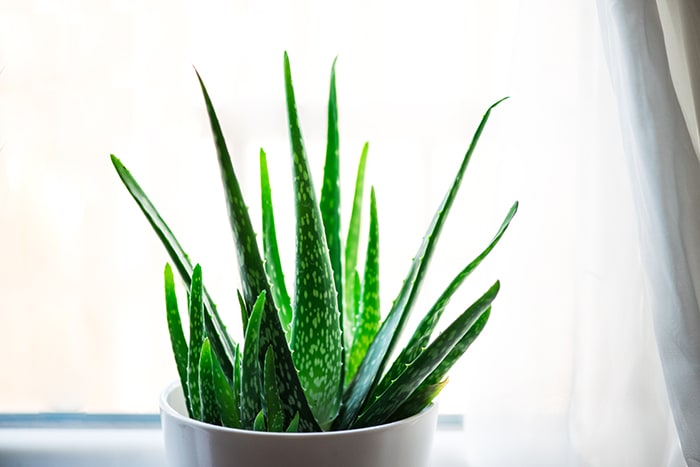
Used as a topical gel in conventional medicine, aloe vera is one of many poisonous plants for dogs. When eaten by dogs, aloe vera can cause mild to moderate bouts of toxicity. Side effects may include vomiting, lethargy, depression, tremors and change in urine.[1]
2. Avocado
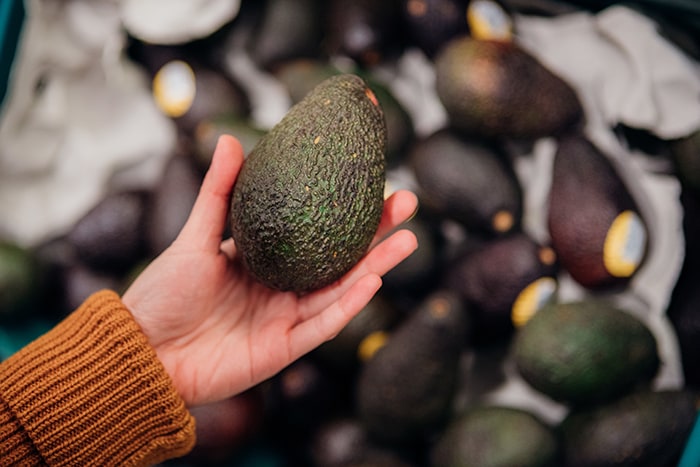
Avocado contains a toxin called persin and its effects can vary in dogs (depending on the variety). While persin is safe for human consumption, it is recommended that no part of the avocado (fruit, pits, leaves or bark) should be fed to your pet. [2]
A toxic plant for dogs; avocado can cause an upset stomach and its high fat content may cause pancreatitis also known as inflammation of the pancreas [3]. The most dangerous part of the avocado seems to be the pit.
Avocado pits can be swallowed accidentally and unfortunately lead to obstruction in the gastrointestinal tract.
3. Chocolate
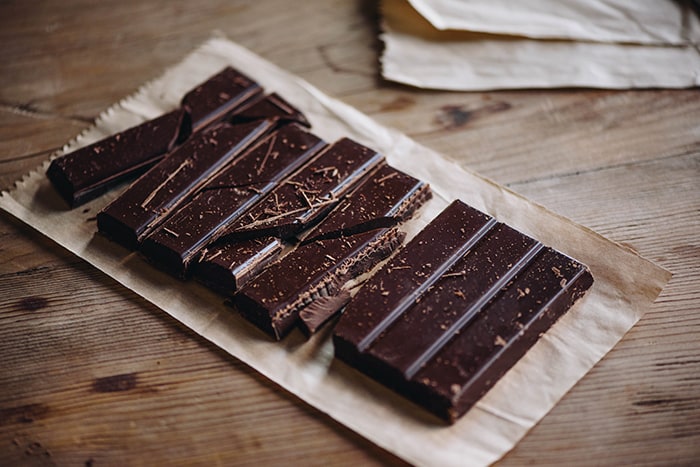
Chocolate is an extremely toxic food for dogs, containing caffeine and the stimulant chemical theobromine. Both substances are difficult for dogs to metabolise and may lead to a build-up of theobromine in the body.[4]
The severity of side effects is dependent on the size of the dog, how much and what type of chocolate has been ingested. The darker the chocolate is, the more dangerous it’ll be for your dog.[3]
Unsweetened baker’s chocolate and cocoa powder are some of the most toxic food varieties for dogs while white chocolate is the least toxic of them all.
Dogs most commonly experience food poisoning from chocolate on holidays; specifically, Easter, Christmas, and Valentine’s Day. They may show signs of symptoms after ingesting as little as 20mg per kg of body weight.[2]
If eaten by a dog, chocolate can cause vomiting, dehydration, abdominal pains, severe agitation, and an elevated body temperature. These symptoms can also progress to more serious problems, like heart attacks, internal bleeding, muscle tremors, seizures, and death.[2]
4. Ferns

Ferns present a mild to moderate toxicity for dogs that can lead to allergic dermatitis, drooling, vomiting and abdominal pain [1]. The Emerald Feather or Lace fern is one of the most poisonous plants for dogs and is difficult to distinguish against other ferns.
Therefore, it’s important that you check which plant you’ve purchased when assessing whether it’s safe around dogs.
5. Grapes and raisins
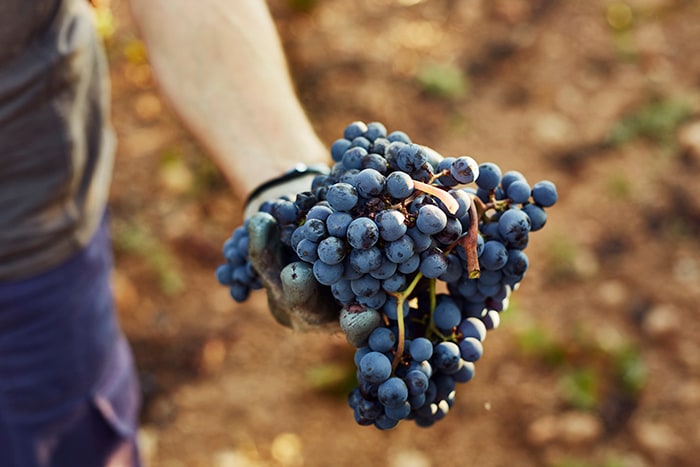
Grapes and raisins have a moderate to high level of toxicity when fed to dogs. The toxic compounds in grapes are still unknown and the results of consumption should be taken very seriously.
Different levels of toxicity vary from dog to dog and common side effects include kidney failure, vomiting or diarrhoea, dehydration, and a lack of appetite.
In fatal circumstances dogs may die from kidney failure within three to four days [3]. It is important to note that poisoning not only can come from raw grapes and raisins, but also in baked goods like cookies, cakes, and snack bars. [2]
6. Macadamia nuts
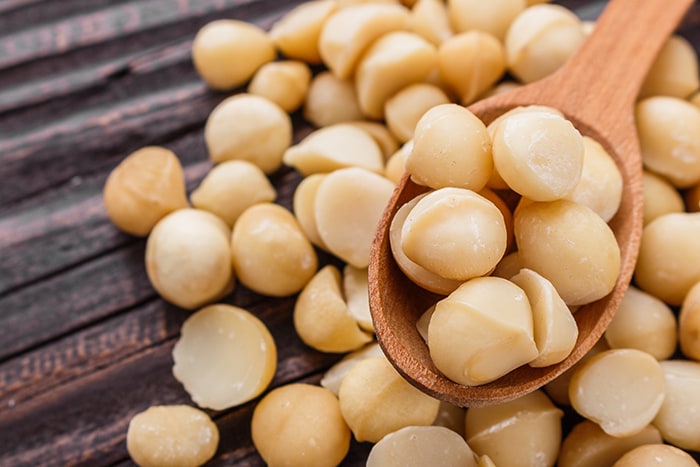
Macadamia nuts contain an unknown toxin and are known to cause devastating side effects for dogs if eaten. A recent discovery, macadamia nuts cause weakness, muscle tremors and vomiting in dogs.
Nuts contain a high fat content that can potentially lead to pancreatitis or an inflamed pancreas.
7. Mushrooms
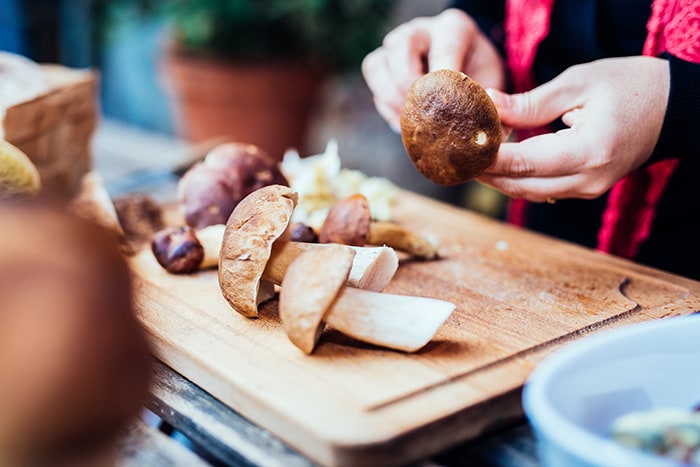
Your dog’s symptoms are dependent on the type of mushroom they consume. There are seven types of poisonous mushrooms; liver toxic, hallucinogenic, toadstool, mushrooms that contain muscarinic agents, false morel and mushrooms that contain gastrointestinal distress. [5]
Mushroom poisoning will require immediate hospitalisation and your dog may also show signs of vomiting, diarrhoea, abdominal pain, weakness, yellowing of the skin, excessive drooling, and seizures. [5]
8. Onions and garlic
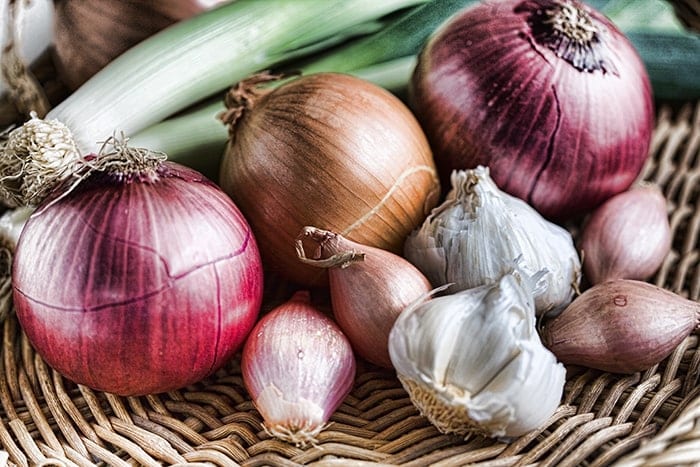
Both incredibly poisonous plants for dogs; onion and garlic can damage red blood cells in dogs and cause anaemia. If enough of either plant is consumed, then a blood transfusion may also be necessary.
Generally, the stronger the onion the stronger its toxicity. Garlic contains compounds that are also very toxic; proving that garlic is more dangerous to dogs than onions are per mg. [3]
9. Sago palms
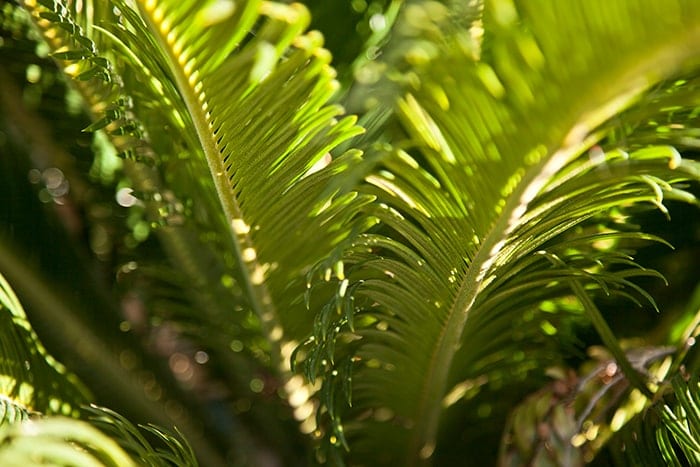
Sago palms contain an ingredient called cycasin and are part of a group of extremely toxic plants for dogs. Consumption of the sago palm is fatal with the seeds of the plant displaying the highest levels of toxicity.
If eaten the Sago palm causes bloody diarrhoea, liver damage, liver failure, bleeding disorders and multiple organ failure. When purchasing plants for your home, avoid sago palms as a preventative measure to ensure the overall health of your pets.
10. Xylitol
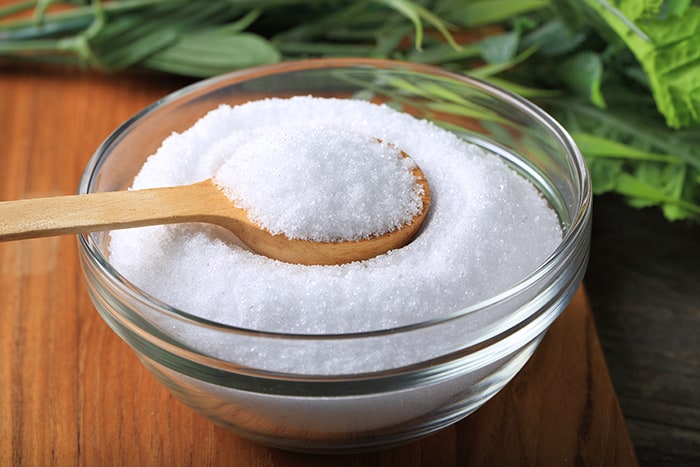
Xylitol is a sugar alcohol and while it’s safe for human consumption it’s a very toxic food for dogs. Used to sweeten candy, some peanut butters, chewing gum and toothpaste; eating foods that contain xylitol can lead to a drop in your dog’s blood sugar, liver damage and even death.
Initial symptoms in the 30 minutes after ingesting xylitol may include: weakness, vomiting, depression, coma, and seizures. [2]
Knowing which toxic food and plants to avoid is just the first step in making sure your dog’s safe – even when they’re at home. Finding the right pet insurance for when your pet gets sick, may take the pressure off you, if some of your pet’s costs are covered.
Before purchasing pet insurance make sure to check out our guide to buying the best pet insurance and weigh up the pros and cons of each policy for your dog’s safety and overall health.
FAQs
Is bread bad for dogs?
No. Dogs can be fed a small amount of plain white, or wholegrain bread as a treat. If your dog doesn’t have any allergies, or an upset stomach, then small amounts of bread can be incorporated alongside a balanced diet.
Is lavender poisonous to dogs?
Yes. The toxic compound linalool is found in small concentrations in lavender and is only harmful to dogs when ingested in large quantities.
Can mulch make a dog sick?
Yes. Mulch can be very harmful to your dog if ingested. This is due to pesticide residue or mycotoxins from mould. If you suspect your dog may have been exposed to something poisonous please contact your vet immediately.
What mulch is poisonous to dogs?
Mulch can be made from many different materials and may contain pesticides or mould that can be toxic to your dog. Cocoa bean mulch can be particularly toxic to dogs. It contains theobromine and caffeine, just like chocolate and could harm your dog.
Sources
[1] ABC Everyday, 2018, 10 common plants that are poisonous to dogs and cats
[2] Healthline, 2017, 7 human foods that can be fatal to dogs
[3] Insider, 2014, 12 foods that could kill your dog
[4] Purina, 2017, Can dogs eat chocolate
[5] PetMD, 2017, Mushroom poisoning in dogs
[6] Preventive Vet, 2016, Pet emergency statistics and veterinary costs
Related articles
- Bringing home a new puppy
- The Cost of Owning a Pet in Australia
- How to find the right vet for your pet
- 10 easy ways to remove dog hair from your car
- Tick Paralysis in Dogs: Signs, Symptoms and Prevention
- Common cat diseases
- Common dog diseases
- What dog breeds are best for me?
- 8 tips to keep your dog cool in summer
- How to Buy the Best Pet Insurance
- Travelling with pets
- What cat breeds are best for me?
- Bringing a new kitten home
- Things to Know Before Owning a Dog
- 6 dental care tips for cats and dogs
- Harmful foods and items your cat shouldn’t eat
- How to Socialise Your Dog
- How to Keep Your Dog Entertained While at Work
- Pet Costs Survey and Statistics 2023
- How to Save on Pet Insurance
- The Ultimate Pet Vacation Destinations
- Most Popular Dog Names Around the World
- Big Dog Breeds: Health, Cost and Personality
- Small Dog Breeds: Health, Cost and Personality
- How much exercise does my dog need?
- Pet Vaccinations: What vaccines are there and what are the pros and cons?
- Australia’s Favourite Dog Breed
- Why does my dog have diarrhoea?
- Cats vs Dogs: What makes a better pet?
- Pets in Australia Survey and Statistics 2024
- Australian Dog and Cat Care Survey 2024
- Easter Recipes Your Dog and Cat Will Love
- Dog Socialisation Survey and Statistics 2025
- How to Keep Your Pets Safe During Fireworks and Storms



